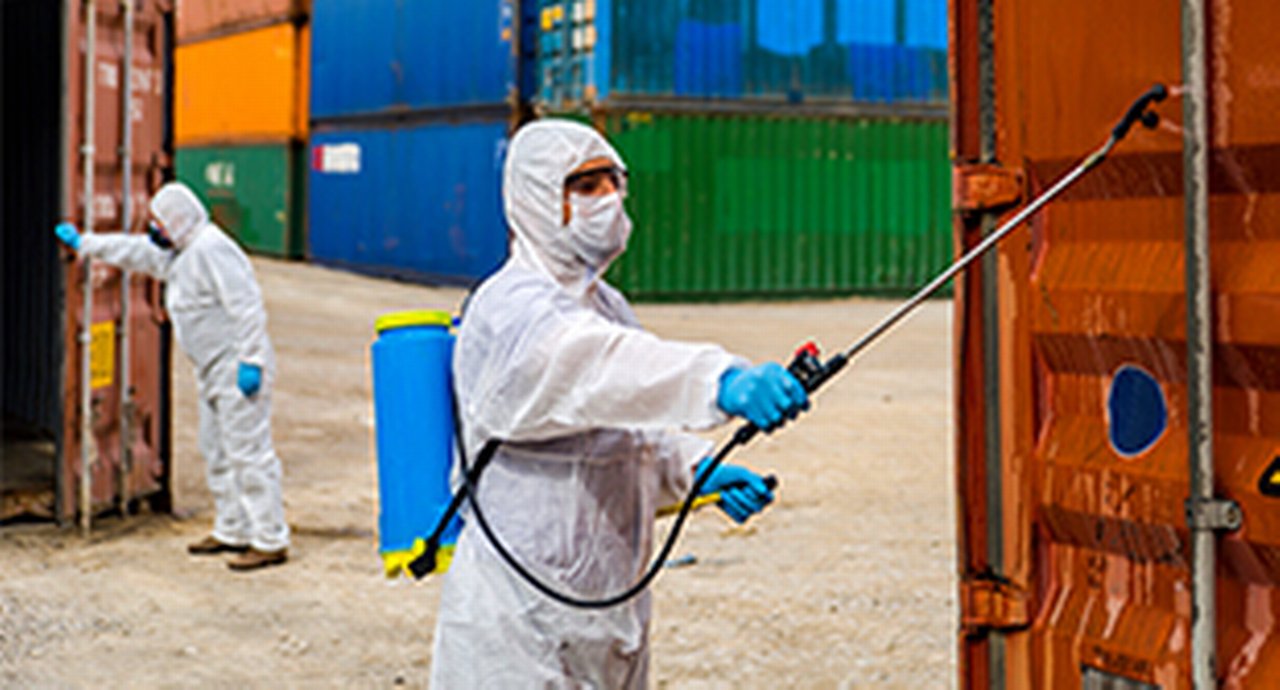September 2020
As Covid-19 sends global trade growth backwards, and accelerates nationalism, speculation mounts as to what the recovery might look like in a world where the arms trade tops the industry trade growth charts. Dr Rebecca Harding shares insights from Coriolis Technologies
Which letter of the alphabet do you prefer to describe the pending economic recovery from the Covid-19 pandemic: V-shaped? U-shaped? W-shaped? L-shaped – with no recovery at all? Or my favourite, a flattening V-shape, what investor George Soros termed “an inverted square root sign”. That certainly covers everything, but can the shape of the recovery help sweeten the shock of a pending global economic crisis?
Structural shift
This debate has been doing the rounds globally since economists first realised that the crisis was not going to pass with only a few temporary supply chain disruptions, and that something major was happening to the global economy.1 Despite the fact that forecasts for global growth had actually been quite positive at the start of 2020,2 the world’s manufacturing ground to a halt during the early part of the year, inventories collapsed and some 95 countries around the world imposed export restrictions on key medical and food supply chains in order to ensure that their national interests were protected.3 It is no surprise that the World Trade Organization expects trade value to fall by anything between 13% and 32% during 2020.4 By May, trade volumes had already shrunk by an estimated 17%.5
Whatever hieroglyph might be used to illustrate the post-Covid era is immaterial compared with the scale of the structural change that the global economy, and global trade, will go through post-Covid-19. Shifts to greater digitalisation and the shortening of supply chains are trends that have been evident for some years now. The need to keep trade, and trade finance, moving through the crisis has accelerated implementation of digital technologies, and greater distribution of supply chains across the world to reduce inventory dependency on single sources is an obvious reaction from the sector itself. All of this is irrespective of the consequences of greater protectionism and the continuing trade war between the US and China.
There are few precedents upon which to base a forecast for trade, but the simultaneous collapse in oil prices, equity markets and global trade through Covid-19 is redolent of the 2008−2009 global financial crisis (GFC). The projections presented here use momentum projections from 2019−2023 adjusted for the rates of trade growth between 2008−2009 and 2009−2012.6 While the merits of this could be debated, adjusting the forecast for the patterns after the GFC allows us to see what would happen to trade if the recovery followed a similar V-shaped pattern for the initial recovery, with a subsequent slowdown in the rates of trade growth as the Asian economies became more integrated into the global trading system.
Of course, there are a number of significant differences between the present and the GFC. For example, the shift of trade to Asia that occurred after the last financial crisis cannot be assumed to be likely during the recovery from Covid, not least because of the ongoing trade war between the US and China. The structure of trade has also changed with China’s growth over the past 12 years – there is now greater electronic hardware to support digital communications, as well as biopharmaceutical trade evident in the data. China itself is consuming more in the way of luxury items such as cars. Europe’s internal market has changed; there is more internal trade and the EU only has 27 members since the UK voted to leave in 2016.
Oil shock
It is the collapse in oil prices that is likely to cause the biggest shock to trade during 2020 (see Figure 1), and the major oil exporters in the G20 will be hardest hit.

Figure 1: G20 countries’ trade: projected change in exports and imports, 2019−2020 (%)
Source: Coriolis Technologies
Oil-producing economies are experiencing their fourth oil price shock since 2008. Within the G20, Russia and Saudi Arabia are the worst affected, and are likely to see their value of exports decline by around 38% and 45% respectively. Neither economy has the economic resilience to withstand this pressure: Saudi Arabia’s oil dependency undermines its attempts at economic reform while the price of oil remains at below US$70 a barrel. It has never recovered its economic growth after the oil price collapse in 2014 and 2015. Russia’s imports are also set to decline, and by more than exports, suggesting the drop in oil revenues will have a major impact on demand in the economy.
The issue, however, is less about how much the economies will be affected in 2020 and more about how quickly they can recover (see Figure 2 below). While major oil exporters may continue to see slower growth in their export revenues, Saudi Arabia’s imports look set to recover fairly quickly, with this recovery set to be the most rapid of any country in the G20. This may suggest an increase in overall demand in the Saudi Arabian economy, perhaps pointing to a longer-term shift in the economic base of the economy, such as a shift to services trade, which is excluded from Figure 3 (below). For Russia, however, the trade picture is bleak up to 2023, indicating an underlying weakness in the economy. The International Monetary Fund (IMF) is predicting a collapse in GDP growth of -6.6% in 2020. 7

Figure 2: G20 countries’ trade: projected change in exports and imports, 2019–2023, compound annual growth rate (CAGR) (%)
Source: Coriolis Technologies

Figure 3: Top 25 sector trade: projected change in exports and imports, 2019−2020 and 2019−2023, CAGR (%)
Source: Coriolis Technologies
Asian resilience
The economies that have grown rapidly in trade terms since the GFC – China, Mexico, Turkey, South Korea and the US – should be able to recover from the current crisis well. It does not appear that the long-term impacts of the trade war or Covid-19 on China’s trade will be substantial, perhaps because China itself is increasing its trade rapidly with countries across the Belt and Road and the Association of Southeast Asian Nations region in particular.
For example, China’s trade with Vietnam is likely to increase at an annualised rate of over 10% up to 2023, while its trade with Mexico (which was in intermediate goods to support US supply chains) is projected to fall back over the same period. China’s resilience comes from the sheer size of its trade presence in the world.
EU bloc
Intra-regional trade growth within the EU27 is the underlying trend here, with its exports set to increase and its imports decrease on an annualised basis over the next four years. A closer look at the data suggests that intra-regional trade growth between 2013 and 2018 was approximately 3.8%; however, between 2016 and 2018, the annualised rate of growth was over 10%, suggesting that the region has been relying on its own internal trade after the Brexit referendum.
The fact that the UK’s exports are set to fall annually by around 1.1% up to 2023 suggests that structural changes resulting from both Covid-19 and Brexit will affect it more severely than the EU27 as a whole. France’s trade outlook is slightly worse than the UK’s, but it has been moving many of its manufacturing supply chains to cheaper locations in Europe (Poland, Hungary and the Czech Republic in particular), so the cause of the enduring decline in trade is quite different to that of the UK.
Exogenous shock
This economic crisis is a policy-induced downturn and is not caused by financial, or even initially economic, instability. It is an exogenous shock − in other words, one that comes from outside of the economic system − the like of which we have never seen before. The sectors that have been particularly affected by the impact of policy decisions to halt production include infrastructure and construction-related sectors such as iron and steel, the car sector and the engineering sector. The drop in oil prices at the start of the pandemic and their failure to recover subsequently can explain the collapse in oil and gas trade values. But iron and steel is impacted more severely in terms of trade growth in 2020 because infrastructure and construction have themselves ground to a halt in Q1 and Q2 of 2020 (see Figure 3).
This economic crisis is a policy-induced downturn and not caused by financial, or even initially economic, instability
All of this shows a somewhat depressing picture – 2020 will be a year that is one of the toughest on record and will catalyse some long-term changes to the way the world’s trade works.
Banks and businesses are investing in the rapid acceleration of digitalisation, which will change the way we trade as well as the way we finance trade. Businesses are likely to accelerate the automation of routine tasks, changing the way we work and not just where we work. Supply chains will shorten, while the phrase ‘reducing dependency’ has become part of a political, as well as an economic, discourse since the crisis. Inventories have crashed because of their dependency on one supplier in the automotive sector. The admission in February 2020 from the then Jaguar Land Rover CEO Ralf Speth that “we have flown parts in suitcases from China to the UK” represents a stark illustration of this.8 Supplier dependencies have also affected the electronics and, most worryingly of all, pharmaceuticals industries.
Renewed nationalism
But perhaps most concerning of all is how Covid-19 has acted as a catalyst to further ignite nationalism, and such nationalism cannot be healthy for the future of trade. More than 95 countries have imposed restrictive tariff regimes on products associated with Covid-19 medical supply chains. The US has bought up supplies of the drug Remdesivir, walked away from the World Health Organization and threatened sanctions against China because it thought it was insufficiently transparent about the origins and spread of the virus. In return, China has imposed trade restrictions on Australia for agreeing that there needed to be an independent, global inquiry into Covid-19’s origins.
Covid-19 has intensified the economic nationalism that has weaponised trade since 2016.9 China’s military expenditure has increased year-on-year since the GFC. Military expenditure in the EU and the US had been declining, but it has increased in the past two years. All this is evident in the trade statistics, and this year is no exception – the arms trade looks like it will be the fastest-growing sector during 2020, followed by sugar and confectionery (see Figure 4). It is a worrying thought that, as a world, we are online shopping, cleaning, eating and smoking our way through a year unlike any other in living memory, while trade is literally being weaponised.

Figure 4: Trade growth sectors, 2019−2020 (% change) and CAGRs (2013−2018, 2019−2023)
The crisis will leave a lasting legacy, with trade set to become more fragmented, nationalistic and digitised. There will be opportunities – greater digitalisation means that there is more scope to support SMEs, and localisation of supply chains is an essential first step towards greater sustainability. Banks and businesses that are committed to multilateralism and free trade need to ram the message home to policymakers that distributed supply chains do not mean that the world’s trade system can operate amid pockets of nationalism. The fact that pharmaceutical trade will grow globally reflects the global inter-dependency of these supply chains as we strive for a vaccine – from the research and development through to the medicines and equipment that will help people recover.
No new normal
As the crisis rolls on, one can be sure there will be no ‘normal’ to return to. The shape of the recovery is still open to interpretation – V-shaped if your glass is half-full or L-shaped if it is half-empty; W-shaped if you favour a double-dip; and U-shaped if you think we can get back to normal. My money is on the flattening V-shape akin to Soros’s “inverted square root sign” – growth may recover somewhat, but the likelihood of it plateauing below where we were at the end of 2019 is high, and this reflects the size of the structural changes the world is going through.
The UK novelist LP Hartley once wrote that “the past is a foreign country; they do things differently there.” Much the same can be said of past economic shocks and subsequent recoveries. These are extraordinary times, and there are no Covid-19 precedents.
Dr Rebecca Harding is an independent trade economist and CEO of Coriolis Technologies
Sources
1 See https://bit.ly/3g9eSHh at businessinsider.com
2 See https://bit.ly/2QkhiZv at imf.org
3 See macmap.org/en/covid19 at macmap.org
4 See https://bit.ly/2E85qqH at wto.org
5 See https://bit.ly/3hVRrUl at cpb.nl
6 Around 80% of the full data for 2019’s trade was available at the time of writing, so the method uses the Coriolis Technique for estimating to the full percentage given growth during the year as a base for 2019
7 See https://bit.ly/2XnZ4JS at imf.org
8 See https://bbc.in/3heXD8X at bbc.com
9 See The Weaponization of Trade: the Great Unbalancing of Politics and Economics by Rebecca Harding and Jack Harding, published on 25 October 2017 at londonpublishingpartnership.co.uk
You might be interested in
Trade finance and lending
Redefining the supply chain finance landscape Redefining the supply chain finance landscape
As Covid-19 dislocates supply chains in Southeast Asia, corporates are turning to supply chain finance to maintain their liquidity. Chito Santiago of the Asset talks to Zandy Ip and Daniel Tan about how anchor buyers are supporting their suppliers
Trade finance and lending
Financing trade’s recovery Financing trade’s recovery
While Covid-19 has shaken trade and trade finance, the industry has the essentials to ride out the storm. The key is to build on momentum gathered since the outbreak and build out the framework for the industry’s long-term digital evolution, explains Deutsche Bank’s Russell Brown
Trade finance and lending
Journey into simplicity Journey into simplicity
How will India’s meet its US$5trn GDP target in the next five years? And what role will financiers, government reform and technology have in making this happen? Clarissa Dann reports on GTR’s one-day conference in Mumbai




